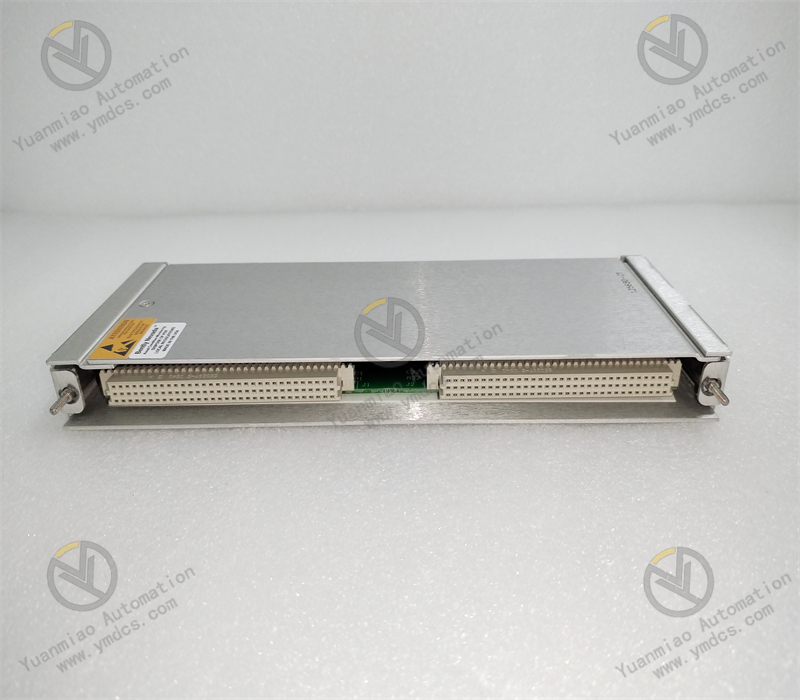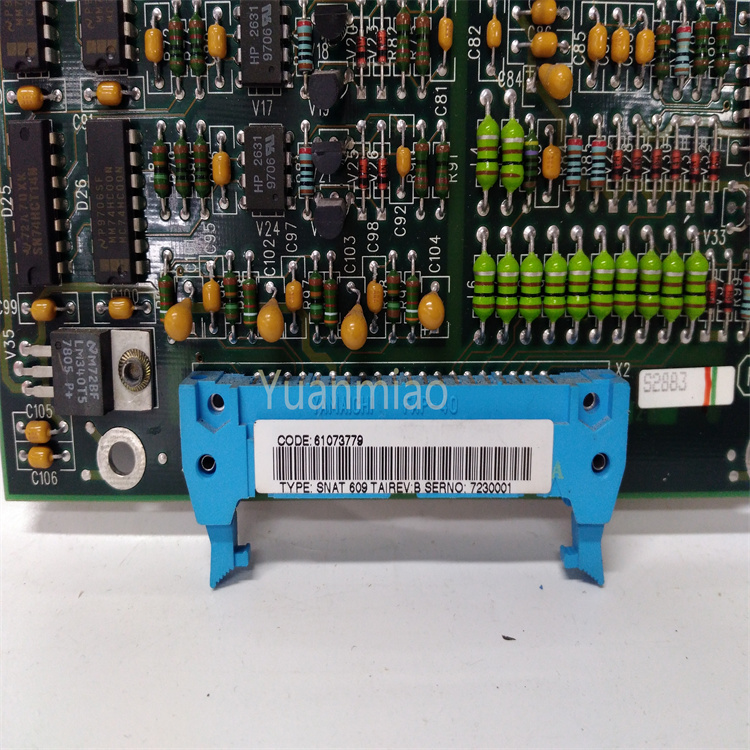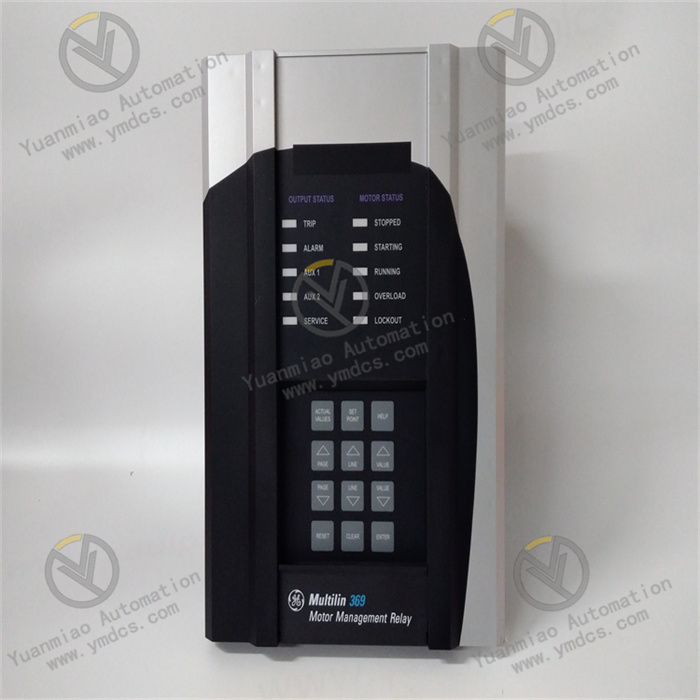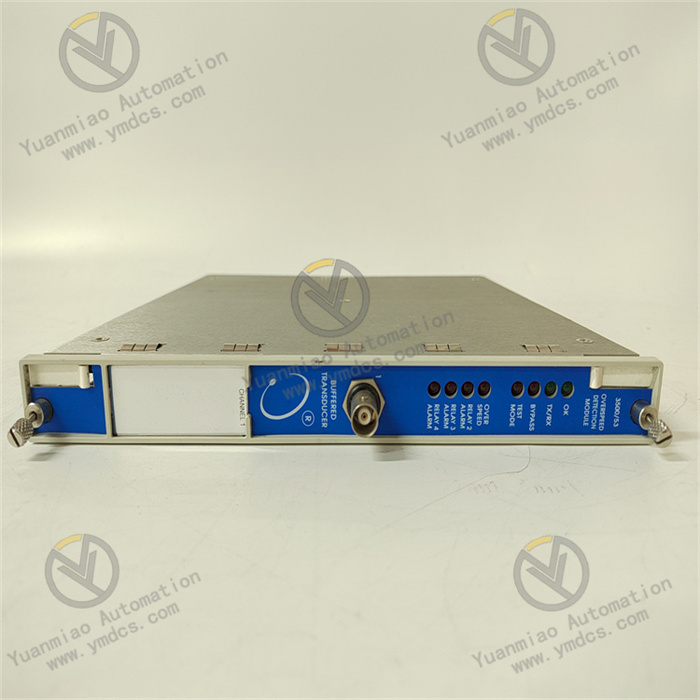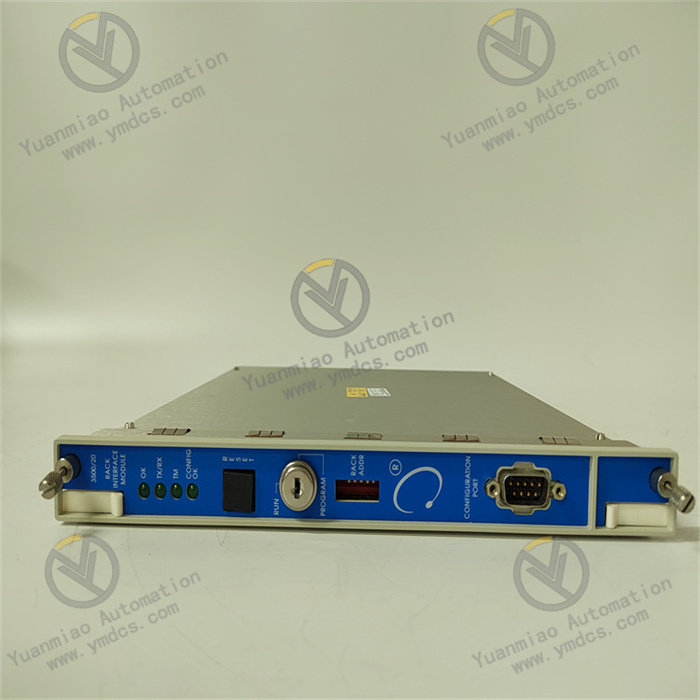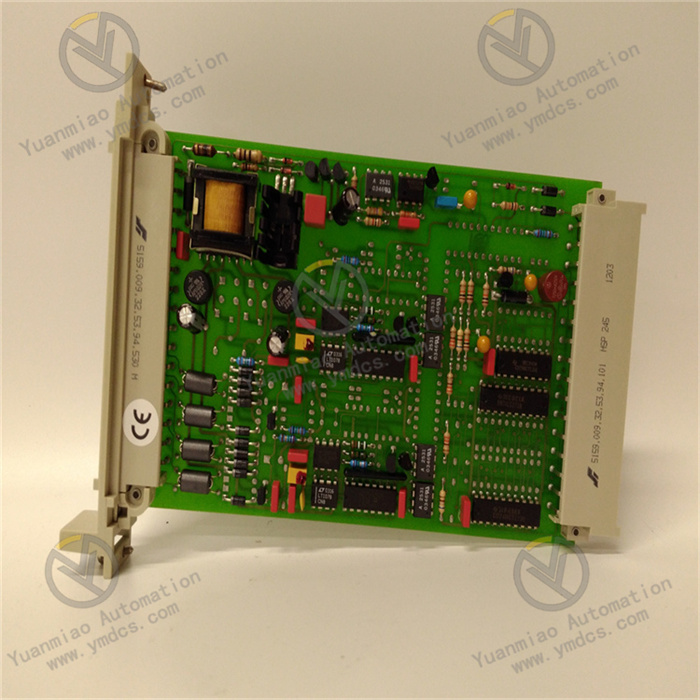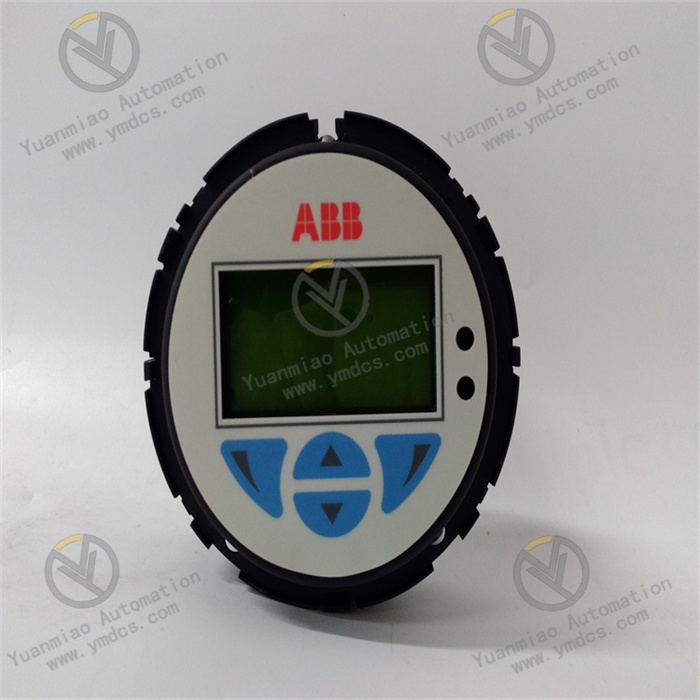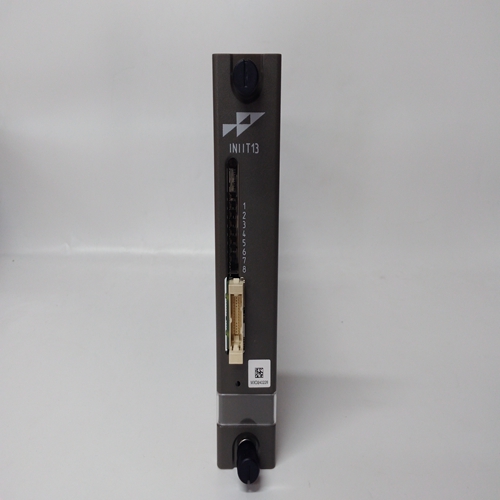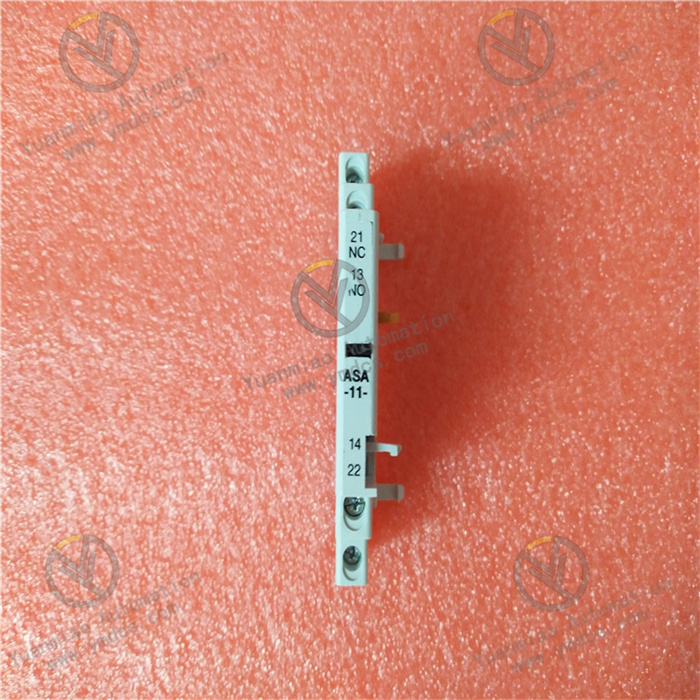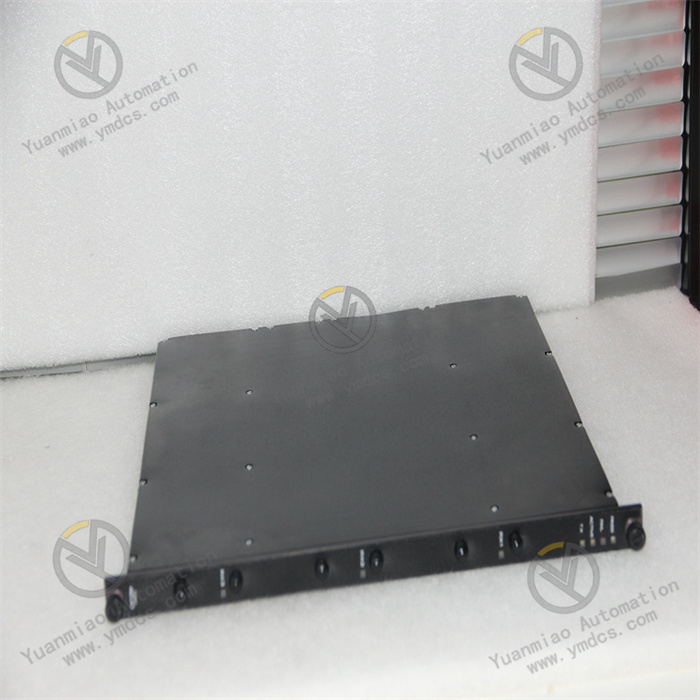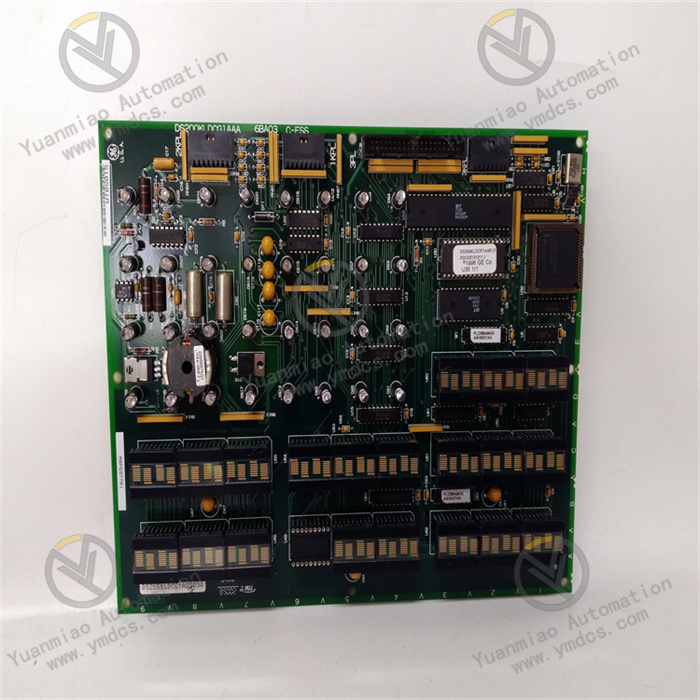Description
Technical Specifications Functional Features: It may be a sensor or a related module used to measure key parameters of equipment such as vibration, displacement, and rotational speed, providing data support for the condition monitoring and fault diagnosis of the equipment. By sensing the physical changes of the measured object, it converts them into electrical signals for output, so that subsequent monitoring systems can process and analyze them. Measurement Principle: If it is a vibration sensor, it may be based on the piezoelectric effect principle, which can convert the mechanical energy of the equipment's vibration into electrical signals; if it is a displacement sensor, it may adopt the eddy current principle, and output corresponding electrical signals by detecting the distance changes between the probe and the measured object. Output Signal: Generally, it outputs standard analog signals. Common ones are, for example, a 4 - 20mA current signal or a 0 - 10V voltage signal, which is convenient for connection and integration with other monitoring devices and control systems. It may also have a digital output function, which is used to provide simple status indication or communicate with digital systems. Measurement Range: The measurement range will vary according to specific functions and applications. For example, for vibration measurement, it may cover different frequency bands from low frequency to high frequency, and the measured amplitude range may be from a tiny vibration displacement to a large vibration amplitude; for displacement measurement, it may be able to accurately measure displacement changes from a few millimeters to several tens of millimeters. Operating Power Supply: It usually requires a stable DC power supply. A common supply voltage may be 24V DC to ensure the normal operation of the sensor or module. The stability of the power supply has an important impact on the accuracy and reliability of the measurement. Operating Temperature and Humidity Range: The operating temperature range is generally around -40°C to +85°C, and the relative humidity range is 5% - 95% (non-condensing), enabling it to adapt to relatively harsh industrial environmental conditions. However, additional protective measures may be required in extreme environments.
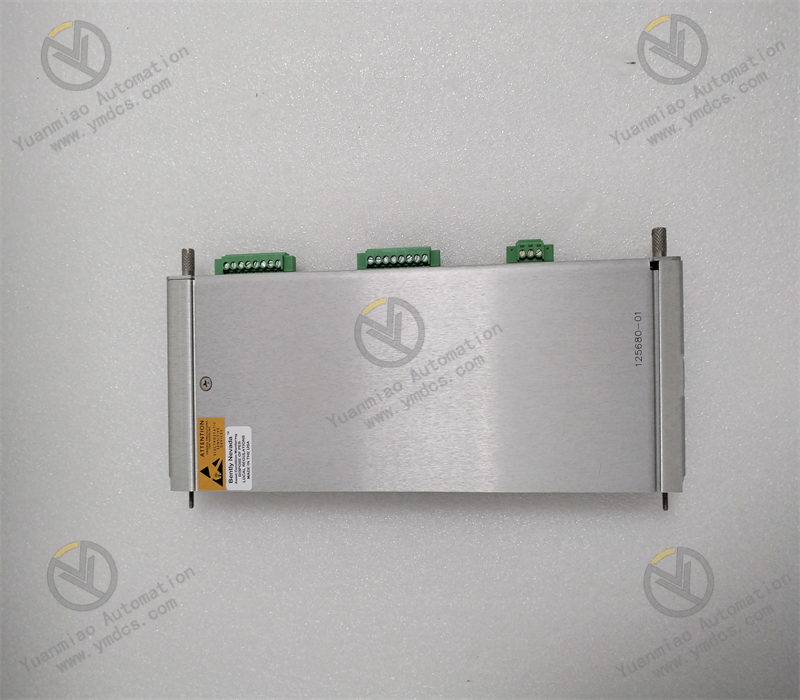 Features and Advantages
High-precision Measurement: By adopting advanced measurement technology and high-quality materials, it can provide high-precision measurement results, accurately capture the subtle changes during the operation of the equipment, and provide a reliable basis for the health management of the equipment.
High Reliability: The products of Bently Nevada are renowned for their reliability. This product has undergone strict testing and verification, and has good anti-interference ability and environmental adaptability. It can operate stably in complex industrial electromagnetic environments and harsh climatic conditions, reducing the probability of failures.
Easy Installation and Maintenance: With a reasonable structural design and simple installation method, it can usually be fixed on the measured equipment by means of threaded installation or magnetic attraction. At the same time, it has good maintainability, which is convenient for regular inspection and calibration, reducing maintenance costs and workload.
Strong Compatibility: It can be seamlessly integrated with other monitoring devices and systems of Bently Nevada (such as the 3500 series monitoring system), and can also communicate and exchange data with related devices of other brands, having strong compatibility and expandability.
Features and Advantages
High-precision Measurement: By adopting advanced measurement technology and high-quality materials, it can provide high-precision measurement results, accurately capture the subtle changes during the operation of the equipment, and provide a reliable basis for the health management of the equipment.
High Reliability: The products of Bently Nevada are renowned for their reliability. This product has undergone strict testing and verification, and has good anti-interference ability and environmental adaptability. It can operate stably in complex industrial electromagnetic environments and harsh climatic conditions, reducing the probability of failures.
Easy Installation and Maintenance: With a reasonable structural design and simple installation method, it can usually be fixed on the measured equipment by means of threaded installation or magnetic attraction. At the same time, it has good maintainability, which is convenient for regular inspection and calibration, reducing maintenance costs and workload.
Strong Compatibility: It can be seamlessly integrated with other monitoring devices and systems of Bently Nevada (such as the 3500 series monitoring system), and can also communicate and exchange data with related devices of other brands, having strong compatibility and expandability.
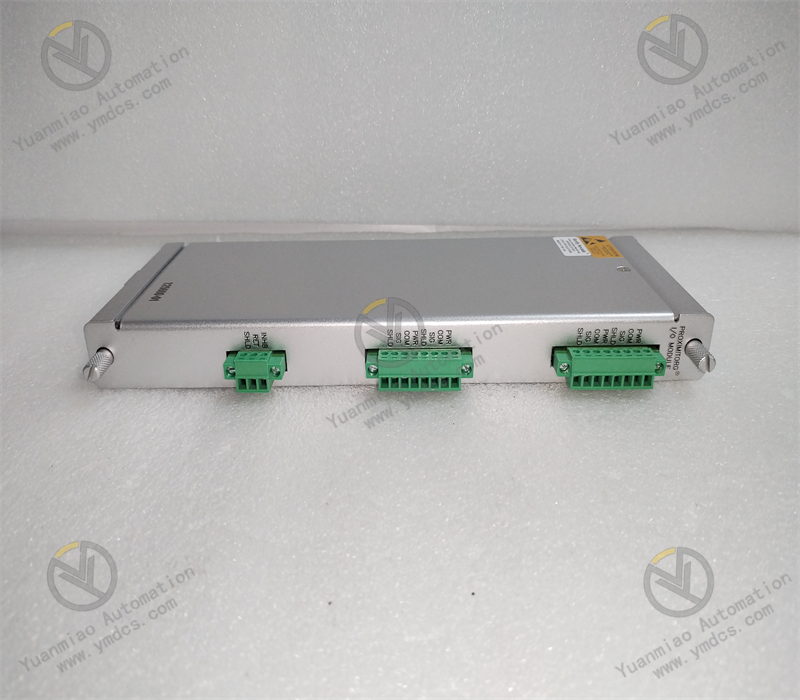 Application Areas
Power Industry: It is widely used in the condition monitoring of equipment such as steam turbine generator sets and hydro turbine generator sets in power plants, and real-time measurement of parameters such as shaft vibration, shaft displacement, and differential expansion, to promptly detect abnormal conditions of the equipment and ensure the safe and stable operation of power production.
Petrochemical Industry: In the petrochemical production process, it is used to monitor the operating status of key equipment such as compressors, pumps, and fans. By measuring parameters such as the vibration and displacement of the equipment, it prevents the occurrence of equipment failures and avoids production losses caused by equipment shutdowns.
Metallurgical Industry: In steel production, it monitors the condition of equipment such as rolling mills, blast furnaces, and converters, and keeps track of the operating status of the equipment in real time, improving production efficiency and product quality, and reducing the costs of equipment repair and replacement.
Mechanical Manufacturing: It can be used for quality control in the research, development, testing, and production processes of mechanical equipment. By measuring the vibration and displacement of key components of the equipment, it optimizes the design and performance of the equipment to ensure that the products meet the quality standards.
Application Areas
Power Industry: It is widely used in the condition monitoring of equipment such as steam turbine generator sets and hydro turbine generator sets in power plants, and real-time measurement of parameters such as shaft vibration, shaft displacement, and differential expansion, to promptly detect abnormal conditions of the equipment and ensure the safe and stable operation of power production.
Petrochemical Industry: In the petrochemical production process, it is used to monitor the operating status of key equipment such as compressors, pumps, and fans. By measuring parameters such as the vibration and displacement of the equipment, it prevents the occurrence of equipment failures and avoids production losses caused by equipment shutdowns.
Metallurgical Industry: In steel production, it monitors the condition of equipment such as rolling mills, blast furnaces, and converters, and keeps track of the operating status of the equipment in real time, improving production efficiency and product quality, and reducing the costs of equipment repair and replacement.
Mechanical Manufacturing: It can be used for quality control in the research, development, testing, and production processes of mechanical equipment. By measuring the vibration and displacement of key components of the equipment, it optimizes the design and performance of the equipment to ensure that the products meet the quality standards.
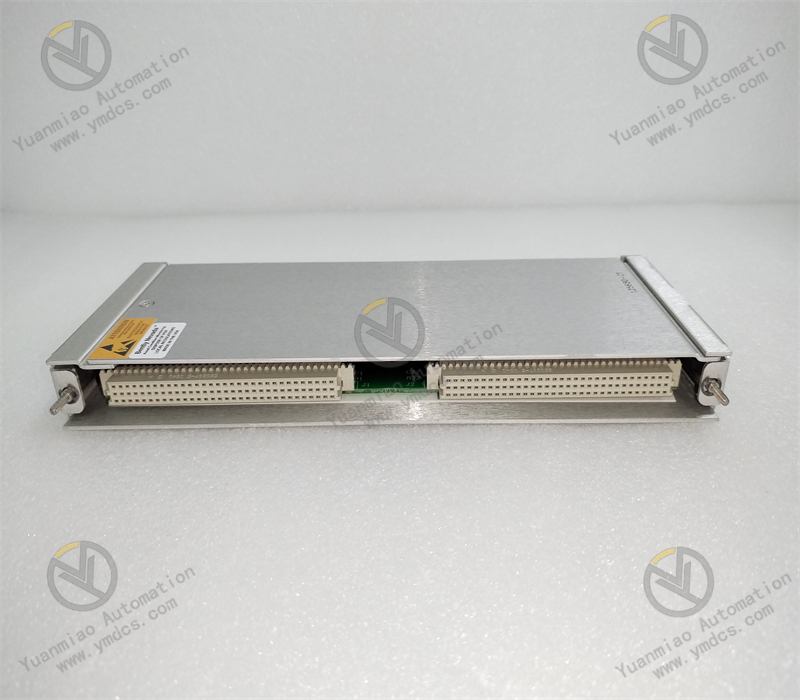 Common Faults and Solutions
Abnormal Measurement Value
Possible Causes: Faults in the sensor itself (such as component damage, performance degradation), incorrect installation position (resulting in inaccurate measurement), faults in the signal transmission cable (such as open circuit, short circuit, interference), changes in the surface condition of the measured object (affecting the measurement result).
Solutions: Check whether the sensor is damaged. A standard signal source can be used for testing. If there is a problem, replace the sensor in a timely manner; Confirm whether the installation position of the sensor meets the requirements, adjust the installation position and ensure it is firmly installed; Check the signal transmission cable, repair or replace the damaged cable, and take shielding measures to reduce interference; Check whether there are situations such as oil stains and wear on the surface of the measured object, and carry out cleaning or repair treatment.
No Output Signal
Possible Causes: Abnormal power supply (such as the power not being connected, insufficient voltage), faults in the internal circuit of the sensor (such as damage to the power circuit, faults in the signal processing circuit), loose or disconnected connection cables.
Solutions: Check the power connection and voltage to ensure normal power supply; Use professional tools to detect the internal circuit of the sensor, find and repair the fault points; Check the connection cables to ensure they are firmly connected. If they are loose or disconnected, reconnect them.
Signal Interference
Possible Causes: There are strong electromagnetic interference sources around (such as motors, transformers, etc.), and the signal transmission cable has not taken shielding measures or has poor shielding.
Solutions: Keep the sensor and the signal transmission cable away from strong electromagnetic interference sources; Check whether the shielding layer of the signal transmission cable is intact. If it is damaged, repair or replace the cable in a timely manner, and ensure good shielding grounding.
Common Faults and Solutions
Abnormal Measurement Value
Possible Causes: Faults in the sensor itself (such as component damage, performance degradation), incorrect installation position (resulting in inaccurate measurement), faults in the signal transmission cable (such as open circuit, short circuit, interference), changes in the surface condition of the measured object (affecting the measurement result).
Solutions: Check whether the sensor is damaged. A standard signal source can be used for testing. If there is a problem, replace the sensor in a timely manner; Confirm whether the installation position of the sensor meets the requirements, adjust the installation position and ensure it is firmly installed; Check the signal transmission cable, repair or replace the damaged cable, and take shielding measures to reduce interference; Check whether there are situations such as oil stains and wear on the surface of the measured object, and carry out cleaning or repair treatment.
No Output Signal
Possible Causes: Abnormal power supply (such as the power not being connected, insufficient voltage), faults in the internal circuit of the sensor (such as damage to the power circuit, faults in the signal processing circuit), loose or disconnected connection cables.
Solutions: Check the power connection and voltage to ensure normal power supply; Use professional tools to detect the internal circuit of the sensor, find and repair the fault points; Check the connection cables to ensure they are firmly connected. If they are loose or disconnected, reconnect them.
Signal Interference
Possible Causes: There are strong electromagnetic interference sources around (such as motors, transformers, etc.), and the signal transmission cable has not taken shielding measures or has poor shielding.
Solutions: Keep the sensor and the signal transmission cable away from strong electromagnetic interference sources; Check whether the shielding layer of the signal transmission cable is intact. If it is damaged, repair or replace the cable in a timely manner, and ensure good shielding grounding.

Bently Nevada Related Products
| 330130-040-00-05 | 330130-045-10-00 |
| 330130-080-10-05 | 330130-045-00-05 |
| 9200-09-01-02-01 | 330130-040-01-00 |
| 9200-06-01-01-00 | 330930-065-05-05 |
| 9200-01-05-10-00 | 330930-065-01-00 |
| 330130-045-00-00 | 330930-065-00-00 |
| 9200-01-01-10-00 | 330930-060-01-05 |
| 330130-085-00-05 | 330930-060-00-00 |


